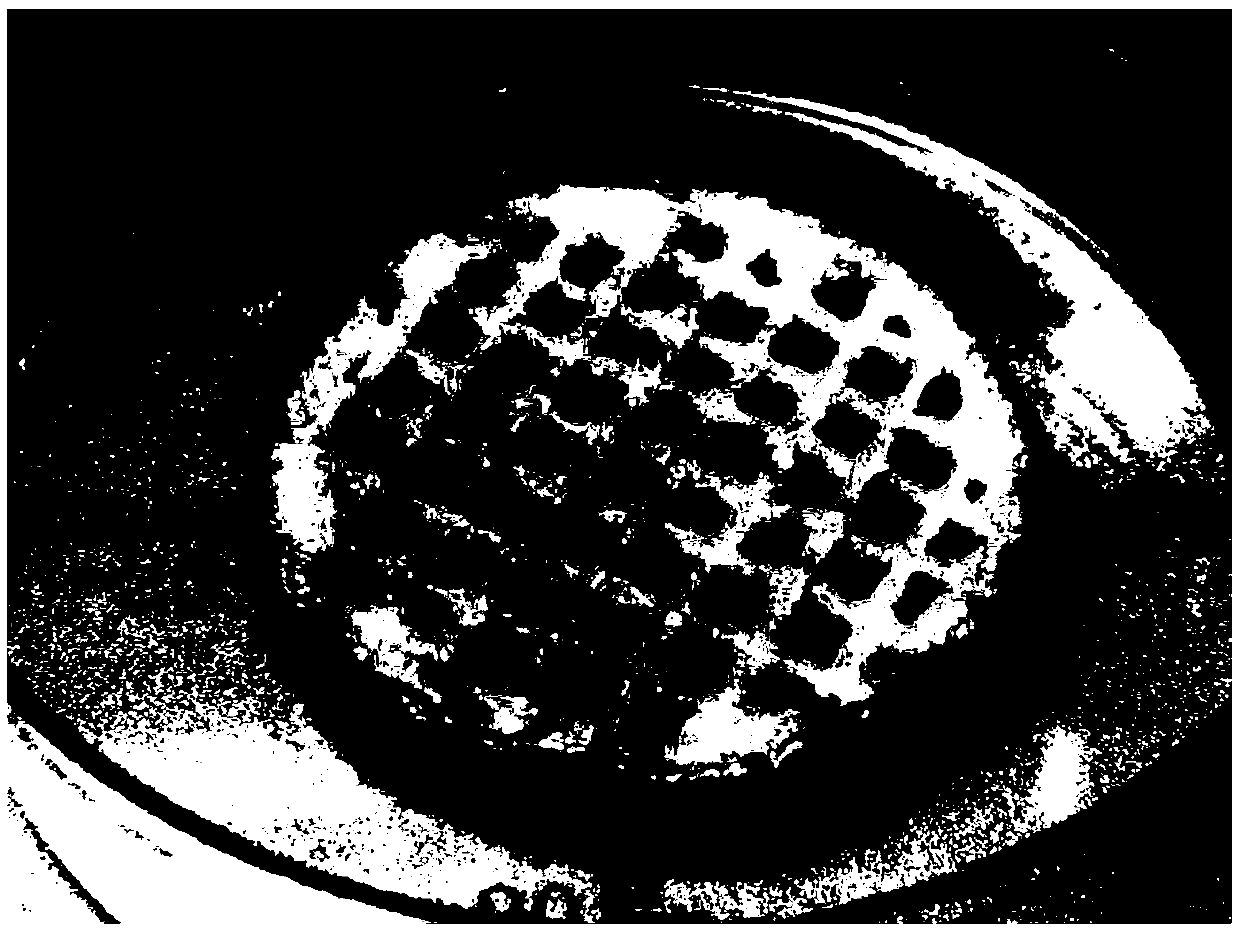Hydrogel composite material for 3D printing and preparing method and application thereof
A composite material and 3D printing technology, applied in the field of 3D printing, can solve problems such as limited applications, achieve good biocompatibility, meet demand, and have abundant sources
- Summary
- Abstract
- Description
- Claims
- Application Information
AI Technical Summary
Problems solved by technology
Method used
Image
Examples
preparation example Construction
[0038] In a second aspect, the present invention provides a method for preparing the above-mentioned hydrogel composite material, comprising the following steps:
[0039] Dissolving PEG-modified chitosan and gelatin with water to obtain solution A;
[0040] Dissolve α-cyclodextrin with an equal volume of water to obtain solution B;
[0041] Solution A and solution B were mixed to obtain a hydrogel composite material.
[0042] In the present invention, when dissolving PEG-modified chitosan, gelatin and α-cyclodextrin, the volume of water used is the same.
[0043] Specifically, the water is deionized water.
[0044] In a third aspect, the present invention provides an application of the above-mentioned hydrogel composite material in 3D printing.
[0045] Further, the method of 3D printing includes the following steps:
[0046] Fill the hydrogel composite material into the printing cylinder and place it in the printer water tank;
[0047]Take out the printing cylinder from ...
Embodiment 1
[0056] The molecular weight of 0.1g is 5×10 4 Da chitosan was dissolved in 20mL of MES buffer solution with a pH of 5.0, and a certain volume of dilute hydrochloric acid was added to promote dissolution; in addition, a certain amount of PEG-COOH with a molecular weight of 350Da was added to a round-necked flask to make it with The molar unit ratio of chitosan is 1:1, then add a certain amount of EDC and NHS to make the molar unit ratio of chitosan 4:1, dissolve it in 10mL MES buffer solution with pH 5.0, and react for one hour Finally, the mixed solution was added to the previously dissolved chitosan solution and reacted in the dark for 24 hours. The reacted solution was dialyzed in deionized water for 3 days with a dialysis bag with a molecular weight cut-off of 8000Da-14000Da, and finally PEG-modified chitosan powder was obtained by freeze-drying, and the grafting rate was calculated to be about 60%.
[0057] Get 0.2g of prepared PEG-modified chitosan powder and 0.2g of gel...
Embodiment 2
[0064] 0.1g molecular weight is 10 5 Da chitosan was dissolved in 20mL of MES buffer solution with a pH of 5.0, and a certain volume of dilute hydrochloric acid was added to promote dissolution; in addition, a certain amount of PEG-COOH with a molecular weight of 1000Da was added to a round-necked flask to make it with The molar unit ratio of chitosan is 1:1, then add a certain amount of EDC and NHS to make the molar unit ratio of chitosan 4:1, dissolve it in 10mL MES buffer solution with pH 5.0, and react for one hour Finally, the mixed solution was added to the previously dissolved chitosan solution and reacted in the dark for 24 hours. The reacted solution was dialyzed in deionized water for 3 days with a dialysis bag with a molecular weight cut-off of 8000Da-14000Da, and finally PEG-modified chitosan powder was obtained by freeze-drying, and the grafting rate was calculated to be about 60%.
[0065] Get 0.2g of prepared PEG-modified chitosan powder and 0.2g of gelatin pow...
PUM
| Property | Measurement | Unit |
|---|---|---|
| molecular weight | aaaaa | aaaaa |
| molecular weight | aaaaa | aaaaa |
| molecular weight | aaaaa | aaaaa |
Abstract
Description
Claims
Application Information
 Login to View More
Login to View More - R&D
- Intellectual Property
- Life Sciences
- Materials
- Tech Scout
- Unparalleled Data Quality
- Higher Quality Content
- 60% Fewer Hallucinations
Browse by: Latest US Patents, China's latest patents, Technical Efficacy Thesaurus, Application Domain, Technology Topic, Popular Technical Reports.
© 2025 PatSnap. All rights reserved.Legal|Privacy policy|Modern Slavery Act Transparency Statement|Sitemap|About US| Contact US: help@patsnap.com

